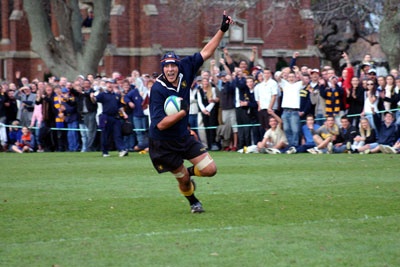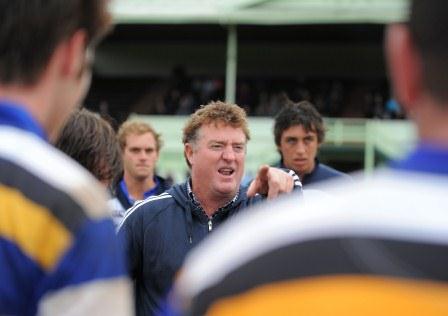- Rugby Toolbox
- Resources & Education
- Learn more
- Articles
- Snook on Coaching
- Motivating Your Players
- Ruck & Run Drill
- Playing Philosophy – Ruck & Run Coaching Components
- Playing Philosophy – Spread the Forwards
- Playing Philosophy – A forward behind the ruck
- Playing Philosophy – Ruck & Run
- Playing Philosophy – An idea!
- The Breakdown
- Building Positivity [3]
- Building Positivity [2]
- Building Positivity
- Fitness and Game Related Activities
- Getting the Head Working
- Missiles are Dangerous
- Use of Video
- Winger Attacking Outside First-Five
- Player Profiling
- Selection
- Fitness Away from the Team Session
- Playing Philosophy (Pre season Prep)
- Coaching the Coaches
- The Rugby Coordinator and Pre-Season Preparation
- Why Not Use Tap Penalties More Often?
- Why Kick the Ball Down the Middle of the Field?
- Defending the 5 Metre Lineout Drive
- Scoring from the 5 Metre Lineout
- What are the Kicking Team Aiming to Achieve from Halfway Restart
- Should We Practice Scoring Tries?
- Team Culture
- Looking After Your Players
- Coach Survival Tips
- Under 11/13 – Backline Defence
- Under 11/13 – Ruck Defence
- Under 11/13 – Back Attack
- Under 13 – The Counter Attack
- Under 11/13 – The Maul
- Under 11/13 – Lineouts
- Under 11/13 – Decision Making
- Under 11/13 – Support Play
- Under 11/13 – Dive Pass and More
- Under 11/13 – Drop & Grubber Kick /Highball Catch
- Under 11/13 – Front on Tackling
- Under 11/13 – Contact – Getting Up – The Ruck
- Under 11/13 – The Coaching Session
- Under 8/10 – Using Space
- Under 8/10 – Kicking
- Under 8/10 – Contact and Picking Up the Ball
- U8/U10 Draw & Pass and Sidestep
- Under 8/10 – The Tackle
- Under 8/10 – The Coaching Session
- Under 7 – Test Your Coaching – Support Play
- Tap Pass and Swerve U7
- Ball Familiarisation; Passing & Receiving
- Activities for the Non-Contact Tackle
- Under 7 – The Coaching Session
- Coaching Teenagers – After the Ruck
- Coaching Teenagers – The Practice Session
- Coaching Teenagers – Best Practice
- Coaching Kids – Best Practice
- Plays from a Tap Penalty
- Running Plays from a 5 Man Lineout
- Driving Plays from a 5 Man Lineout
- Strike Plays at the End of the Lineout
- Back Strike Plays at the Lineout
- Wide Strike at the Scrum (2)
- Wide Strike at the Scrum
- Midfield Attack at the Scrum
- No 8 Plays at the Scrum (2)
- No 8 Plays at the Scrum
- The Cut Out Pass
- Skills to Penetrate (2)
- Skills to Penetrate
- Movements to Penetrate
- Patterns to Penetrate
- Contact and Continuity
- Keeping the Ball Alive Out Wide
- Pre Season Support Activities
- Checklist
- Understanding the game
- The Playing Philosophy
- The Lineout
- Overview
- Team Profile
- Start Now!
- Backrow
- Nine and Ten
- Rugby-related Fitness Activities
- The Psychological Edge
- Open Field Play
- Key Performance Indicators
- Improving Team Performance
- Backline Attack Concepts
- Tactics at Phase Play
- Playing Philosophy
- The ‘Stop Focus’
- Kick Attack
- Clearing the 22
- Wide Attack at Phase
- Player Focus
- Scrum Preparation
- Lineout Preparation
- Back Attack Preparation
- Sevens Preparation
- Sevens Kick Offs
- Sevens Scrum and Lineout
- Sevens Attack Patterns
- Sevens Defence
- 7's Selection and Game Planning
- Coaching and Leadership
- How the Game Evolves
- Changing Within the Game
- Learning from the Television.
- Using Tap Penalties Wisely
- Defence Drills
- Defence Drills for Tight Five
- Team Defence and TUB’ing
- Establishing Patterns from the Ruck
- Structured Phase Play
- Structuring Phase Play on the Run
- Coaching Roles
- Structuring a Close in Tackling/Defensive Session
- Coaching in Threes
- Attacking Back Play
- Kick Off Chase
- Wrap Around Back Plays
- Lineout Plans
- Looking and Learning
- Motivating Your Players
- Scrum Attack
- Refocusing the Team
- Monitoring the Progress
- Learning the Game
- Playing to the Laws
- Small is OK
- Decisions After the Tackle
- Improving Your Coaching
- Food for Thought
- More Food for Thought
- Passing & Catching
- How Ireland Nearly Beat the All Blacks
- The Progressive Coach
- Try Something New
- Encouraging Excitement
- The Mental Approach
- Where to Start
- Being the Best You Can Be
- Off the Ball Decisions
- Lineouts Difficult to Master
- Decisions on the Run
- Rucking and Rolling
- A Successful Approach
- Gaining Clarity
- Manipulation vs Physicality
- Beating the Drift
- To Ruck or Not to Ruck
- Stopping the Lineout Drive
- Fine Tuning the Planning
- It's a Running Game
- RugbySmart 2015
- Using the Shoulders
- Loosehead Prop / Tighthead Prop
- Position Specific – Hooker
- Position Specific – Lock
- Position Specific – Blindside Flanker
- Position Specific – Openside Flanker
- Position Specific – No 8
- Position Specific – Halfback
- Position Specific – First Five Eighth
- Position Specific – Second Five Eighth
- Position Specific – Centre Three-quarter
- Position Specific – Wing
- Position Specific – Fullback
Motivating Your Players

 It is a good idea to use some simple motivational techniques on your players to get them into a positive frame of mind before each game.
It is a good idea to use some simple motivational techniques on your players to get them into a positive frame of mind before each game.
One of my favourites is the ‘warm fuzzy’ sheet.
The sheet has the 22 players in the team (or more or less) written down the left hand margin with the rest of the column left empty.
Each player will receive a sheet and be asked to write a positive comment beside each of his team mate’s names.
The sheet will be returned and each strip will be cut out and placed in the appropriate envelope. In other words Jim gets all the comments on Jim.
The envelope is returned to each player and he can carry it around with him during the season and read it in the shed before he gets changed for the game.
JIM Has a great fend and balance when on attack. Stays on his feet.
BILL Great under the high ball and spotting the space to counter attack
JOHN I love his big tackles!
Cue Cards There are several ways the coach can use a cue card. He can write a personal card to that player and list the two major things that player should concentrate on during the game.
The coach might list five key words or phrases and place them on the changing room wall for the players to digest as they get changed. Better still he could have them on the wall all the week so that the players have ample time to get their focus.
An example could be: How to play well against team B - 1- Double tackle their No 8 2- Attack the short side at phase play 3- Close in defence get off the line quickly 4- Keep the ball on attack 5- Enjoy yourself.
Using different Triggers can be fun and keep the team relaxed before all the group change in to ‘game mode’ at the same time.
1- Get all the team to put their boots on at the same time. “Boots on – switch on.”
2- Everyone wear a cap. When the cap is on the team are relaxing. When the cap is off the players are ‘ready to go’.
3- Players might be asked to all wear red socks to the game so without realizing it the wearing of the socks already has them focusing on the game and buddying up with their team mates far earlier than normal. It might stop them worrying about their own performance and help them overcome any nervousness if you take a ‘relaxed’ approach to this idea.
Coping Strategies: without getting in to any depth of mental preparation a few simple coping strategies could be tried with your team, or individuals within the team.
As an example if the team has had a bad performance they can throw that performance away at the next training and clear the air. Before training starts the players all put their hands together in the middle and yell out the name of the team they are going to play next week.
This will help them forget about last week and look forward to next week.
Individuals can be taught how to deal with mistakes by clenching their fist and imagining the mistake is in the fist. Then throw the mistake away by unclenching and flicking it aside. Now it is time to move on.
Introduce an idea or two with your team. They are good fun and might just help.